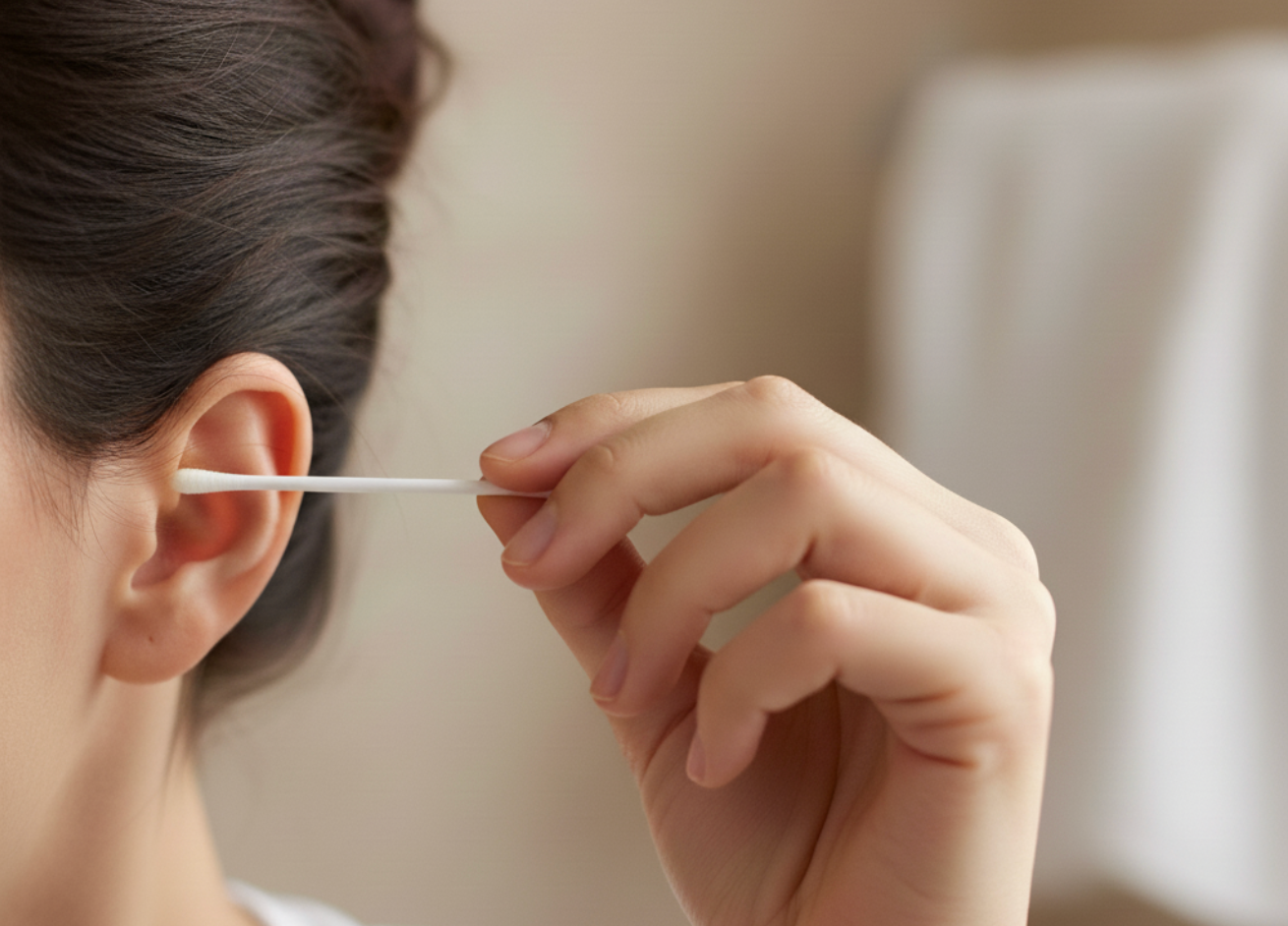
Our Blog
What Does Ear Wax Colour Say About Your Health?

Ear wax may not be the most pleasant topic, but it plays a vital role in ear health. This naturally occurring substance protects the ear canal by trapping dust, dead skin cells, and other debris. It also has antibacterial properties that keep the delicate skin of the outer ear and inner ear safe from infection. While most people think of it as something to remove, unusual earwax colors may signal that something’s off with your ear health.
Read on to find out what your ear wax colour means, when it may be normal, and when it could indicate an ear concern. This helps you recognize when something may not be right and when to book an appointment with an audiology clinic Toronto.
What Ear Wax Colour Tells Us
Ear wax color varies from person to person, and changes can sometimes point to different conditions. Scientists are discovering that earwax may hold more than just clues about your ear health. Some studies have explored whether earwax composition or chemical makeup could provide broader insights into general health that could one day aid in early disease detection. These findings may or may not have been used in clinical diagnoses. Please check with a medical doctor for health concerns if unsure.
Healthy earwax typically ranges from lighter colored earwax in children to darker shades in adults, since old wax darkens as it collects more debris. At the same time, unusual earwax colors, like green or red, may signal ear infections, injury, or earwax blockage. Understanding earwax color variations can help you notice changes that might warrant a professional check.
Types of Ear Wax (Wet vs. Dry)
There are two main types of earwax: wet earwax and dry earwax. These types are determined by genetics, and the difference mostly comes down to genetics. Researchers have identified a gene called ABCC11 that determines which type you have.
People with the AA version of this gene usually produce dry earwax, which is pale, crumbly, and common among those of East Asian descent and many Native Americans. Meanwhile, those with the GG or GA versions tend to have wet cerumen, which has a sticky consistency and oily substance. This type is typical among people of African descent, Pacific Islanders, and most Europeans.
Studies show that about 80–95% of East Asians carry the dry earwax variant, while the wet type dominates in African and European populations. Pacific Islanders and people of mixed ancestry often fall somewhere in between.
Both types are normal and produced by ceruminous glands and sebaceous glands in the ear canal. The differences come from variations in long-chain fatty acids in the wax. Neither earwax type is healthier than the other; both serve as a natural barrier to keep the ears healthy.
It’s also worth noting that genetics isn’t the only factor. Age, health, and environment can affect how “wet” or “dry” your earwax appears. Older wax tends to darken and harden over time, and conditions like ear infections or skin issues can slightly change its texture.
In short, while ABCC11 largely explains why earwax differs among populations, variations and exceptions exist. Whether wet or dry, healthy earwax plays the same essential role in keeping your ears clean and protected.
Common Ear Wax Colors and What They Mean
Earwax can appear in different shades, each telling something about its condition:
Yellow – Usually new and normal, showing healthy earwax production
Orange – Slightly older wax that’s been exposed to air longer
Brown – Indicates aged or possibly compacted earwax
Black – Very old wax that has heavily oxidized over time
Gray – Often linked to dry, flaky earwax, especially in people with dry cerumen
Green – Can be a sign of infection or bacterial buildup
Red – Suggests the presence of blood, often from irritation or a small injury in the ear canal
These color changes are often harmless, but they can also hint at what’s happening inside your ears. Let’s take a closer look at what each earwax color might mean for your ear health.
Light Brown Ear Wax
Light brown earwax often appears in children and in newer earwax that hasn’t had time to darken. It usually signals healthy earwax production and doesn’t require concern.
Yellow Ear Wax
Yellow ear wax is one of the most common types in adults. It typically indicates fresh, healthy earwax with a normal sticky consistency. Excess earwax of this color may happen in people who wear hearing aids or earbuds frequently, since they can trap more earwax in the canal.
White or Grey Ear Wax
Off white or grey earwax is often seen in people with dry earwax. Children tend to have lighter earwax, and dry wax from East Asian descent populations often looks pale and flaky. In most cases, this is simply a variation of normal.
Dark Brown Ear Wax
Dark brown earwax, or even dark brown earwax with a harder consistency, often represents old wax that has trapped more debris. Adults tend to produce darker wax than children, and it is common in people with more earwax buildup. While dark brown earwax is usually harmless, it can sometimes signal excessive earwax or impacted ear wax if it becomes too dense.
Orange Ear Wax
Amber orange earwax often indicates newer earwax that is transitioning between light yellow and dark brown. It’s typically considered healthy earwax and not a cause for worry.
Ear Wax Colors That May Indicate a Problem
The color of earwax is usually not a cause for concern. However, certain colors or other symptoms, such as pain, itching, or discharge, may indicate an underlying medical condition and may warrant an ear health assessment by a qualified clinician.
Green Ear Wax (Possible Infection)
Green ear wax can signal pus from an ear infection, such as swimmer’s ear or chronic ear infections. This type of earwax often has an unpleasant odor and may cause ear pain, muffled hearing, or discharge.
Red or Blood-Tinged Ear Wax (Possible Injury)
Red streaks or blood-tinged earwax usually suggest a bleeding injury in the ear canal. Scratches from cotton swabs, removing wax aggressively, or even a ruptured eardrum can cause this. In these cases, it’s best to have your ears checked by a qualified healthcare provider.
Black Ear Wax (Possible Impaction)
Black ear wax is rare but may point to impacted earwax or very old wax. Impacted wax often causes ear pain, muffled hearing, or even temporary hearing loss. A professional can safely remove earwax in these cases to prevent complications.
Other Factors to Consider: Texture and Amount
Earwax colors tell part of the story, but texture and amount also matter. Harder earwax can cause earwax blockage, while excessive earwax buildup may lead to discomfort and hearing loss. Oily or sticky wax is more common with wet wax, while crumbly, off white wax suggests dry earwax. Too much earwax, or impacted earwax, is more likely in people who wear hearing aids, earbuds, or produce more earwax naturally.
When to See a Professional About Ear Wax
Most ears are self-cleaning and don’t need any help removing wax. However, there are times when professional care is necessary to prevent complications or identify other ear problems.
Consider seeing a healthcare professional or audiologist if you experience any of the following:
Ongoing earache, pressure, or a feeling of blockage
Muffled hearing or reduced ability to hear, especially higher-pitched sounds
Ringing, buzzing, or humming noises in your ear (tinnitus)
Dizziness or balance issues; feeling lightheaded or unsteady
Discharge – Fluid, wax, or any unusual drainage from the ear canal
Seek urgent care or go to an emergency center if you have:
Severe ear pain or swelling
Fever accompanying ear discomfort
Drainage or pus-like fluid from the ear
These symptoms may indicate a ruptured eardrum, a severe infection, or another underlying condition requiring prompt treatment.
You can also see a healthcare professional for other reasons. People who use hearing aids are more prone to earwax buildup and may need regular professional cleaning. Additionally, if over-the-counter drops or gentle home methods don’t help, a trained healthcare provider can perform professional earwax removal, opt for earwax removal performed by trained professionals.
To rule out other conditions, a qualified healthcare provider can confirm whether your symptoms are due to impacted earwax or another ear problem. Medical attention is especially important if you suspect impacted earwax or excessive earwax that home care cannot manage.
Note: Services mentioned may not be publicly funded. Please check with your healthcare provider or local health plan for coverage details.
Tips for Safe Ear Wax Management
While earwax serves an important purpose, managing it safely helps prevent irritation or damage to the ear canal. Here are a few simple tips to keep your ears clean and healthy.
Tip #1: Avoid cotton swabs. These tend to push wax deeper into the canal and can scratch the skin or damage the eardrum.
Tip #2: Skip ear candling. Despite popular claims, it doesn’t remove wax effectively and may cause burns or potentially a ruptured eardrum.
Tip #3: Clean only the outer ear. Use a soft cloth or gently wash the outer ear with warm water during routine bathing.
Tip #4: Soften hardened earwax if advised. Some people use over-the-counter ear drops to soften wax, but it’s best to ask a healthcare provider before trying these at home.
Tip #5: Never use sharp tools. Hairpins, keys, or other objects can cause serious injury.
Tip #6: Consult a professional specifically trained for removing ear wax when necessary.
In most cases, it’s best to let your ears handle the cleaning naturally. The ear canal has its own self-cleaning system that moves old wax outward, where it eventually flakes off on its own.
Important: This article is for informational purposes only and is not a substitute for professional medical advice, diagnosis, or treatment.
Conclusion
Your ears already know how to take care of themselves. The best thing you can do is let them do their job and step in only when something feels off. Earwax is a protective waxy substance that keeps ears healthy by preventing infections and blocking debris. Its color can reflect normal changes or signal possible concerns like infection or injury. Paying attention to the color of earwax and understanding its types can help support ear health and determine when to seek medical attention. Remember: healthy earwax is a sign of healthy ears.
